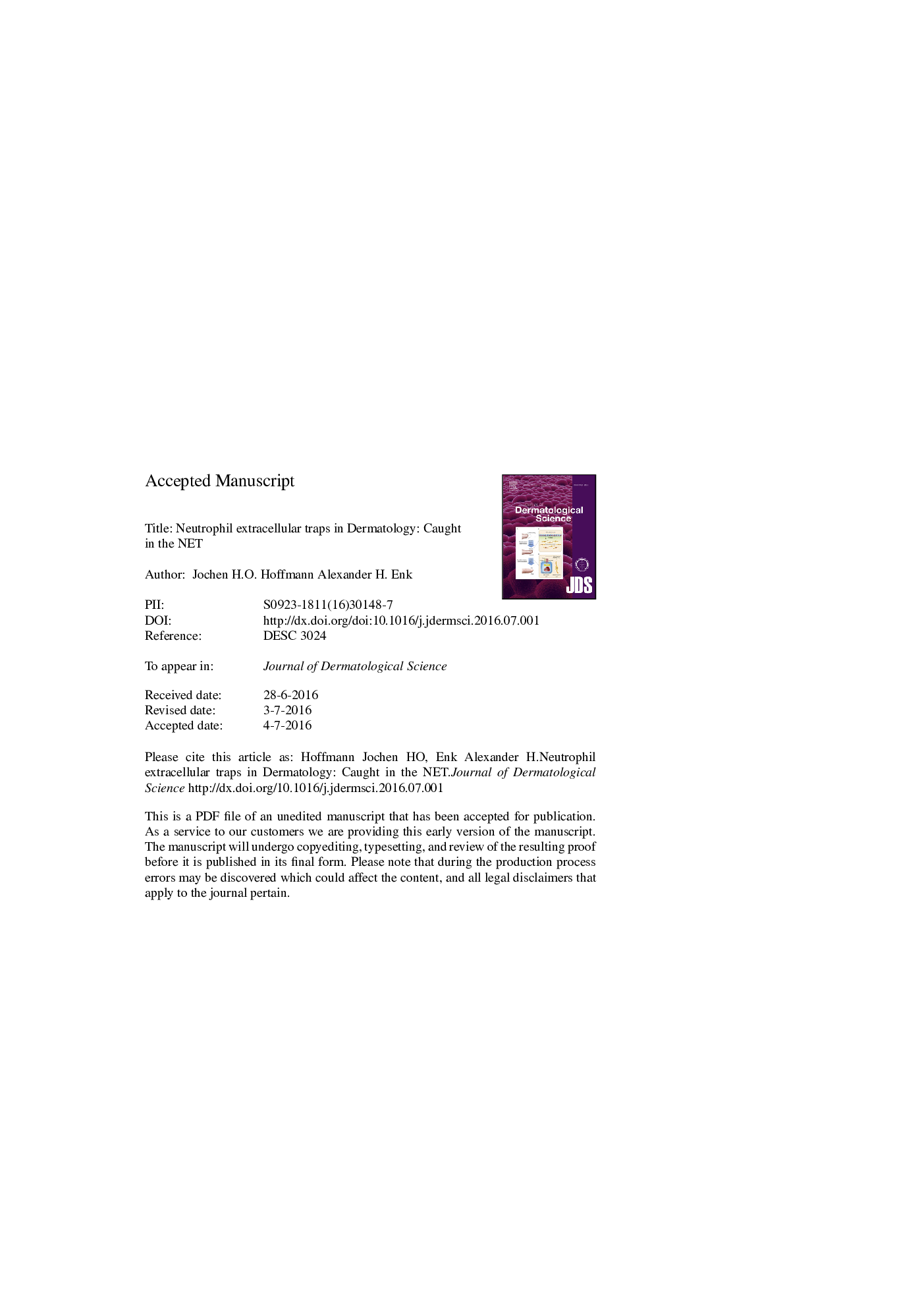| Article ID | Journal | Published Year | Pages | File Type |
|---|---|---|---|---|
| 5648948 | Journal of Dermatological Science | 2016 | 38 Pages |
Abstract
Neutrophil, or polymorphonuclear granulocytes (PMN) constitute the most abundant type of leucocytes in peripheral human blood. One of the major advances in the last decade was the discovery of neutrophil extracellular trap (NET) formation: a process by which neutrophils externalize web-like chromatin strands decorated with antimicrobial peptides. These structures were soon implicated in immune defense and auto-immunity alike and now link neutrophils to the pathogenesis of a variety of diseases of dermatological relevance. Currently, NET formation is mainly subdivided into suicidal and vital NETosis. Controversy exists regarding the capacity of NETs to kill pathogens, and little is known about the way NETs are formed in vivo. Here, we discuss the current terminology, methods for NET quantification, pathways leading to NET formation, and the role of NETs in systemic and cutaneous immune defense and auto-immunity, with a focus on psoriasis and systemic lupus erythematosus.
Related Topics
Health Sciences
Medicine and Dentistry
Dermatology
Authors
Jochen H.O. (Dr.), Alexander H. (Prof. Dr.),
